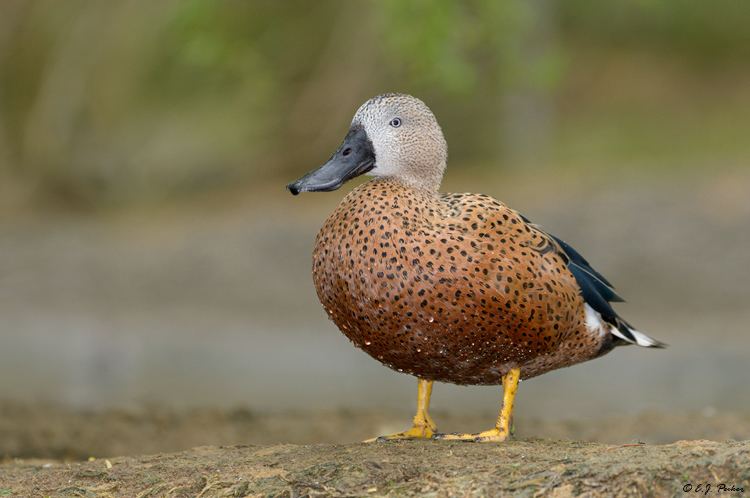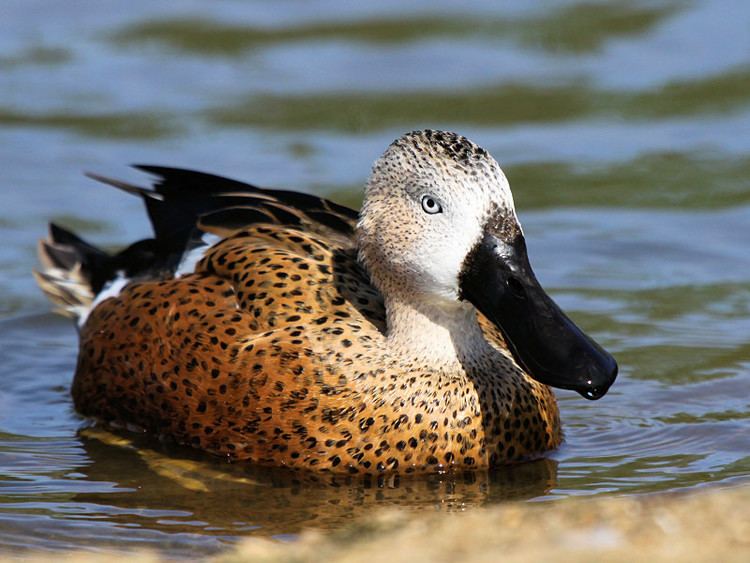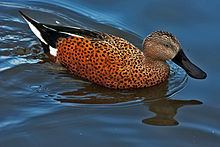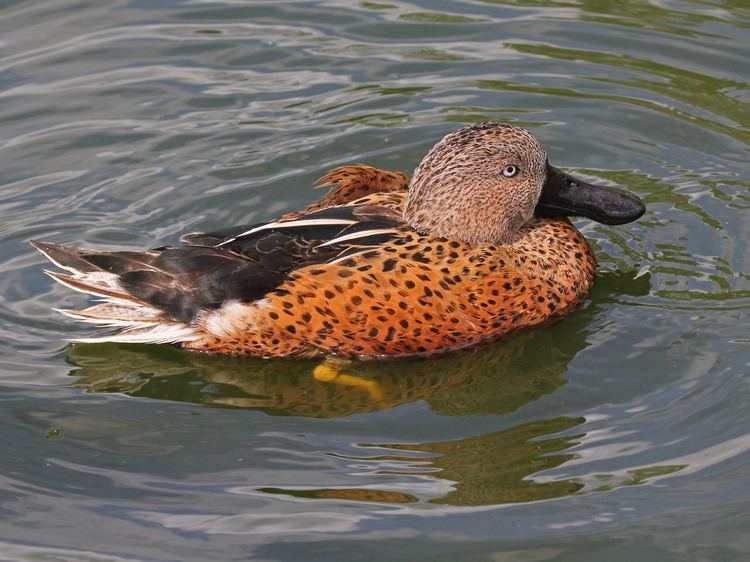Subfamily Anatinae Scientific name Anas platalea Rank Species | Phylum Chordata Genus Anas Higher classification Anas | |
 | ||
Similar Yellow‑billed teal, Silver teal, Yellow‑billed pintail, Chiloé wigeon, Bird | ||
Red shoveler
Description

The species has a spatula-shaped bill, a green speculum, and light blue upper wing converts. Male shovelers vary in color from red to paler shades of red (and pink), while the females tend to have large, dark bills. Adults reach a size of about 45–56 centimetres (18–22 in), weigh about 523–608 grams (1.153–1.340 lb), and have a wingspan of about 66–73 centimetres (26–29 in).
Distribution and habitat

The red shoveler breeds in the southern half of South America. It ranges from Tierra del Fuego northwards to Chile and most parts of Argentina, as well as to the Falkland Islands, and there are small isolated breeding populations in southern Peru. It inhabits shallow lakes and pools with dense reed beds and marshes and can also be found in brackish waters, such as coastal lagoons and estuaries.
Ecology

Red shovelers have a diet that includes herbs, grasses, pond weeds, widgeon grass, algae, and eelgrass. They also feed on small invertebrates. The bill is equipped with a lamellate filtering mechanism that allows the extraction of small items of food from the water. Pairs form in the wintering grounds, after often noisy courtship. Once a clutch of 7-8 eggs is laid, incubation lasts about 25–26 days, followed by 40–45 days of fledging. Red shovelers are partially migratory, with the southern most birds migrating north during the winter season.
Conservation

The red shoveler is a relatively common and widespread species, and is not currently considered at risk. However, it may suffer to an extent from the degradation of its wetland habitats. The species is classified as Least Concern on the IUCN Red List due to its extremely large range and apparently overall stable population.




